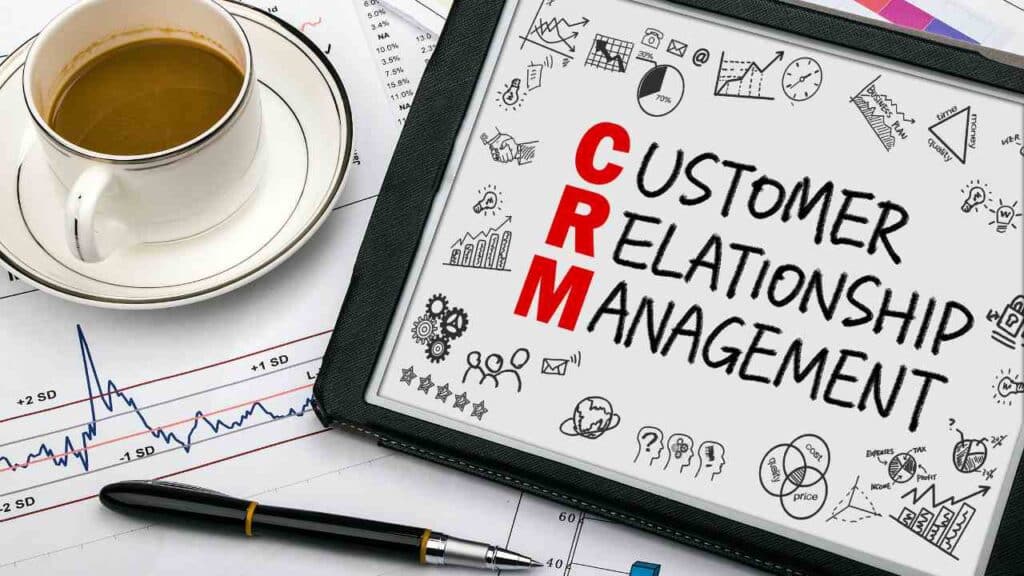Increasing Group Collaboration Using CRM

Collaboration is a crucial aspect of any successful business. When team members work together effectively, they can achieve more, generate innovative ideas, and drive growth. However, managing group collaboration can be challenging, especially when teams are spread across different locations or departments. This is where Customer Relationship Management (CRM) software comes into play. In this article, we will explore how CRM can be used to increase group collaboration within organizations, and how it can benefit small businesses, agency owners, and marketers.
The Role of CRM in Group Collaboration
CRM software is primarily known for its ability to manage customer relationships and streamline sales processes. However, its capabilities extend beyond that. CRM can also serve as a powerful tool for enhancing group collaboration within an organization. Here’s how:
Centralized Communication
One of the key features of CRM software is its ability to centralize communication. Instead of relying on scattered email threads or multiple messaging platforms, team members can use the CRM platform as a central hub for all communication related to a specific project or client. This ensures that everyone is on the same page and has access to the latest updates and information.
For example, imagine a marketing team working on a campaign for a client. With CRM, team members can collaborate on tasks, share ideas, and discuss progress within the platform itself. This eliminates the need for constant back-and-forth emails and allows for real-time collaboration.
Task Management and Assignment
CRM software often includes robust task management features that enable teams to assign tasks, set deadlines, and track progress. This helps in streamlining workflows and ensuring that everyone knows their responsibilities. By having a clear overview of tasks and deadlines, team members can collaborate more effectively and avoid duplication of efforts.
For instance, a project manager can create a task within the CRM platform and assign it to a specific team member. The team member will receive a notification and can update the task status as they work on it. This allows for better coordination and visibility into the progress of each task.
Document Sharing and Version Control
Effective collaboration often involves sharing and editing documents. CRM software can facilitate this process by providing a centralized location for document storage and version control. Team members can upload files, collaborate on them in real-time, and track changes made by others.
For example, a sales team working on a proposal can use CRM to store and collaborate on the document. Each team member can make edits or leave comments, and the CRM platform will keep track of the changes. This eliminates the need for multiple versions of the same document and ensures that everyone is working on the latest version.
Benefits of CRM for Group Collaboration
Now that we understand how CRM can enhance group collaboration, let’s explore the specific benefits it offers to small businesses, agency owners, and marketers:
Improved Communication and Transparency
CRM software promotes open and transparent communication among team members. By centralizing communication within the platform, everyone has access to the same information, reducing the chances of miscommunication or missed updates. This leads to improved collaboration and a more cohesive team.
For small businesses, this is particularly valuable as it allows for seamless communication between different departments or remote teams. Agency owners can also benefit from improved communication with clients, as they can easily share updates and progress reports through the CRM platform.
Increased Efficiency and Productivity
By providing a centralized location for task management and document sharing, CRM software increases efficiency and productivity. Team members can easily track their tasks, collaborate on documents, and access the information they need without wasting time searching through emails or shared drives.
For marketers, this means they can spend more time on strategic activities rather than administrative tasks. Small businesses can also benefit from increased productivity, as CRM streamlines workflows and reduces the chances of tasks falling through the cracks.
Enhanced Data Management and Analysis
CRM software is designed to store and manage customer data. However, this data can also be leveraged for group collaboration. By analyzing customer data within the CRM platform, teams can gain valuable insights that can inform their collaboration efforts.
For example, a marketing team can analyze customer preferences and behaviors to develop targeted campaigns. By understanding their audience better, they can collaborate on creating more impactful marketing materials. This data-driven approach to collaboration can lead to better results and increased customer satisfaction.
Case Study: XYZ Agency
To illustrate the impact of CRM on group collaboration, let’s take a look at a case study of XYZ Agency, a digital marketing agency specializing in social media management.
Before implementing CRM software, XYZ Agency faced challenges in coordinating their social media campaigns. The team relied on email communication and spreadsheets to manage tasks and track progress. This led to confusion, missed deadlines, and a lack of visibility into the overall campaign performance.
After implementing a CRM platform specifically designed for marketing agencies, XYZ Agency experienced significant improvements in group collaboration. The centralized communication feature allowed team members to collaborate in real-time, share ideas, and discuss campaign strategies within the platform itself.
The task management feature enabled the agency to assign tasks to specific team members, set deadlines, and track progress. This eliminated the need for manual tracking and ensured that everyone was aware of their responsibilities. The team could easily see the status of each task and identify any bottlenecks or delays.
Furthermore, the document sharing and version control feature streamlined the process of creating and editing social media content. Team members could collaborate on content calendars, make edits, and track changes, all within the CRM platform. This eliminated the need for multiple versions of the same document and improved the overall efficiency of the content creation process.
As a result of implementing CRM, XYZ Agency saw a significant improvement in their group collaboration efforts. The team was able to work more cohesively, meet deadlines consistently, and deliver high-quality social media campaigns to their clients. The agency also experienced increased client satisfaction and retention rates.
CRM software is not just a tool for managing customer relationships; it can also be a powerful tool for increasing group collaboration within organizations. By centralizing communication, streamlining task management, and facilitating document sharing, CRM enhances collaboration and improves team efficiency.
For small businesses, agency owners, and marketers, CRM offers numerous benefits, including improved communication and transparency, increased efficiency and productivity, and enhanced data management and analysis. By leveraging CRM software, organizations can foster a collaborative culture and achieve better results.
So, if you’re looking to boost group collaboration within your organization, consider implementing a CRM solution like SaasExpert.ca. It’s an all-in-one sales and marketing platform designed specifically for small businesses, agency owners, and marketers. With its comprehensive features and user-friendly interface, SaasExpert.ca can help you take your group collaboration to the next level.
Learn more about Utilizing CRM to Bridge Team Gaps right here.
Frequently asked questions about Increasing Group Collaboration Using CRM.

❓ How does a CRM platform enhance communication within a group?
🌟 A: Communication is the heart of collaboration, especially in a diverse working group. CRM platforms revolutionize inter-team communication by centralizing all customer-related data and communications. 🗂️ No more back-and-forth emails, lost attachments, or outdated spreadsheets; everything is stored in one easily accessible location. This transparency means every team member can see the history of customer interactions, understand specific customer needs, and recognize what steps should be taken next. CRM’s integration with various communication tools also allows for real-time alerts, so teams are immediately notified of any updates, ensuring quick responses and informed decision-making. In short, CRM turns the chaos of group communication into an orchestra of streamlined dialogue and collaboration. 🎻👩🔧
❓ Can CRM systems help in managing collaborative projects more effectively?
📈 A: Absolutely! CRM systems are not just about customers; they’re about relationships, including those on your team. Managing collaborative projects becomes a breeze with a CRM system. 🌬️ Features like task assignment, progress tracking, and deadline alerts are integral for keeping everyone on track. Moreover, because all the project data is stored centrally, team members can access all the information they need in real-time, aiding in seamless collaboration and ensuring everyone is aligned with the project objectives. The beauty of it all? Fewer meetings, less time spent on status updates, and more time for teams to execute the work effectively. 🚀
❓ How do CRM platforms facilitate knowledge sharing and learning among team members?
🎓 A: Knowledge is power, especially in a collaborative environment! CRM platforms foster a culture of learning and knowledge sharing by storing valuable insights about customers, projects, past interactions, and more. 🧠 For new team members, this is like a treasure trove of information, helping them get up to speed quickly. For seasoned members, it’s the palette they need to craft strategies and make informed decisions. By documenting successful case studies or best practices within the CRM, teams create an internal knowledge base. This resource is instrumental for training purposes, resolving similar issues, or devising new strategies, ensuring that the wheel isn’t reinvented each time, but improved upon. 🎡👍
❓ Are CRM systems capable of integrating with other tools to enhance group collaboration?
🔗 A: Most definitely! In today’s interconnected digital workplace, the ability of CRM systems to integrate with other tools is a game-changer. 🕹️ From email marketing software and social media platforms to project management tools and productivity apps, CRM systems act as the glue that holds all other software in a unified ecosystem. This connectivity not only allows for the automatic sharing of data across various platforms, reducing redundancy, but also ensures that all team members can navigate through complex project stages with full sight of all moving parts. The result? A supercharged collaborative environment that can swiftly adapt, respond, and innovate in the ever-evolving market landscape. ⚡
❓ In terms of conflict resolution within teams, how can CRM assist?
🤝 A: Where there’s collaboration, occasional conflicts are inevitable. CRM systems offer an unexpected but effective solution for conflict resolution. How? By providing data-driven insights. 📊 Conflicts often arise from misunderstandings or a lack of clear, objective information. CRM systems chronicle historical data, interactions, and past decisions, allowing team members to refer back to factual information, reducing subjective disagreements. By centralizing communication, CRM also ensures transparency and traceability. Teams can understand the ‘why’ behind decisions, track changes, and, if necessary, correct the course with a clear record of what has transpired. This level of clarity is instrumental in resolving disputes fairly and democratically, ensuring everyone stays on the same page. 📘






